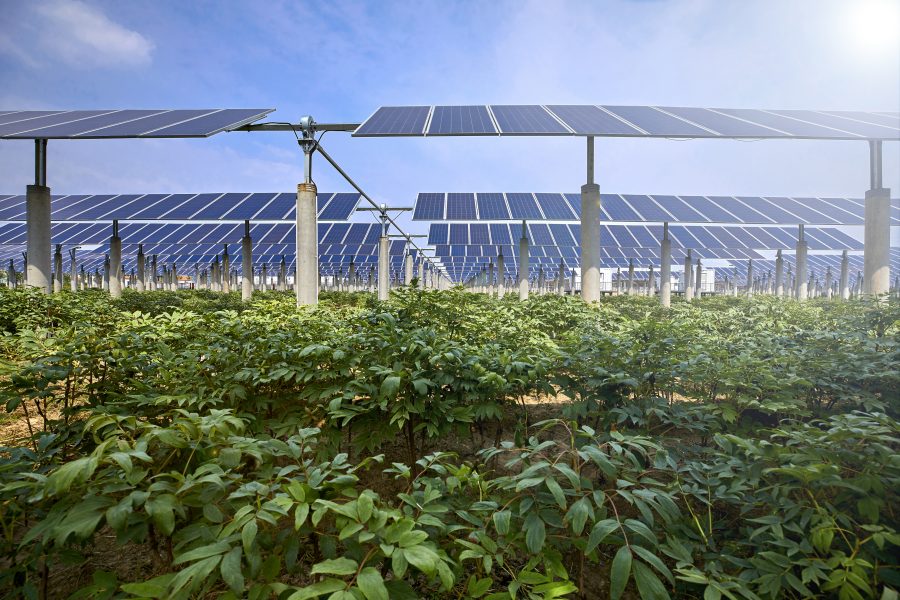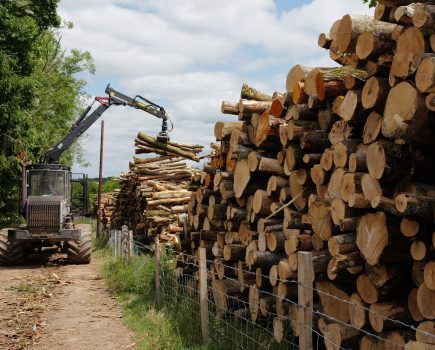It’s fair to say that without the agricultural community taking to commercial-scale solar first back in 2010/11/12, the solar industry would not be in the strong place it is today. Farmers the length and breadth of the country were among the first to recognise that their roof, in addition to their land, was simply another place for them to farm. ‘Back in the day’, however, the average size of system was around 50kW (200 panels) – as opposed to the 200, 300, 400kW+ systems that we see today.
As this sub-sector in the C&I (commercial and industrial) space reaches maturity, what can we expect to see next? Again, it’s fair to say that most farmers are aware of the broad financial/environmental dynamics of a solar PV system: the panels are installed on your roof/land, connected ‘behind-the-meter’ into your electrical system, and every unit of electricity that you are able to consume, at the precise moment it is generated, is yours to use for free; any electricity not consumed at the precise moment of generation is automatically sold to the grid. Each unit of electricity that you generate is either decarbonising your operation or helping to decarbonise the nation’s electricity grid. What many farmers may be unaware of though, are the new and innovative ways of deploying solar today:
- Building Integrated PV (BIPV) – not exactly ’new’ but something that hasn’t yet taken off in the UK in the way that it has on the continent. It’s not uncommon for the chosen barn to need significant TLC before a 25-year plus solar PV system is installed on it. Rather than re-clad/install a new roof only to add solar on top, systems exist that will allow you to build a completely watertight roof made from standard solar panels. The cost of these ‘power roofs’ is equal to the cost of a new roof plus solar on top.
- Carports – the rise of the farm shop has seen a rise in the need for parking. With this in mind, a car port system will help power the running of the farm shop while also offering somewhere to house electric vehicle charging points to entice customers to come and visit; they have the added benefit of providing shelter for when the UK weather does what it does best.
- Floating solar – where a roof-mounted or land-based scheme would be a non-starter, clever floating platforms allow reservoirs and lakes to be used to house solar panels. These pontoon-like structures will rise and fall with the levels of the body of water, and the lack of heat build-up that we see with roof-based systems will help the system perform slightly better than roof-mounted arrays.
- Agri-PV – combining traditional farming with cutting-edge farming, an agri-voltaic structure will allow you to harness the sun above your crops. Bi-facial panels (those that let a portion of light through the module) and well-considered design will allow the crops to continue to receive the sunlight they need while providing some protection during harsher weather.
What does the future hold for solar?
Energy storage is the obvious one, but what is really exciting, at least in the short-term, is the level of support we can expect to see from the new Government. It’s important to remember that the main support mechanism for solar – the feed-in tariff scheme – was a Labour policy, introduced just one month before the 2010 General Election. It’s highly unlikely that we will see a return of the FITs, but what would be welcome is some sort of interest-free loan for farmers to deploy solar panels so that the repayments can be fully covered by the savings/income that the system produces; at present, the ability to be ‘cash-positive’ in year one is the preserve of those that can use the majority of their solar power. And if the government cannot step in, then there are new funding mechanisms being introduced almost daily to unlock the solar potential of our farms.
Shaun Beattie, Commercial Director, Solar
Having spent nearly 15 years developing commercial-scale solar in the rural community, Shaun joined eEnergy in May 2024 as their commercial director to accelerate the company’s renewable initiatives and support its mission to make net zero both possible and profitable for all organisations.
About eEnergy
With over a decade’s worth of experience and more than 1,000 successful decarbonisation projects, eEnergy believes in transforming the way we save energy and reduce our carbon footprint, all at no upfront cost. We do this by improving three fundamental areas:
- Reduce carbon and costs with energy efficient LED lighting;
- Generate clean energy through solar PV.
- Charge reliably and safely, with EV charging infrastructure and management . This is supported by compliant and easy finance solutions to help organisations deliver decarbonisation projects with no upfront costs.
For more like this, sign up for the FREE South East Farmer e-newsletter here and receive all the latest farming news, reviews and insight straight to your inbox.







